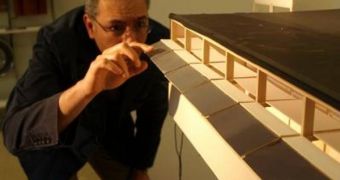While most people nowadays argue the necessity of integrating “green” devices into modern buildings, a renowned architect supports the necessity of these less-polluting technologies being installed on existing structures as well. University of Oregon Professor of Architecture Ihab M.K. Elzeyadi says that the United States currently manage about 20 billion square feet of school property, which could be completely transformed with a sustained effort. The architect is currently engaged in researching the second stage of creating the Green Classroom Toolbox, a set of actions that could benefit administrators when pondering the possibility of renovating their schools.
“We believe our findings can help plan classroom designs and retrofits to green our aging schools, which are energy and environmentally unconscious. Under the American Recovery and Reinvestment Act of 2009, school districts will have access to federal funding to modernize and green their schools. Our work provides school designers and officials with the needed guidelines to direct this process the right way. It will act as a decision support system,” Elzeyadi says. He is also an Oregon Built Environment & Sustainable Technologies Center (Oregon BEST) participating faculty member. The independent and non-profit center was set up by the Oregon Legislature in 2007.
“I am alarmed by the state of our schools. We have 20 billion square feet of existing space that are in worse conditions than our prisons, and this is where students are expected to learn. [...] existing classrooms have been largely ignored,” the architect adds. However, he notes, in some regions of the US, a part of his colleagues are already beginning to insert “green” elements in their work, when they are commissioned to retrofit an existing school.
“We need to be able to understand not only how buildings can conserve energy, but also what impacts these efforts have on humans inside them. If we can have two sides of the story, then we can have triple benefits for people, profit and planet,” he shares. “You can't drastically change poor early design decisions, but our analysis shows that some minimal retrofits in the classroom can have drastic impacts. I found there had been lots of guidelines and best practices about new constructions, but not existing structures. I thought it was time to do that for retrofits,” Elzeyadi concludes.

 14 DAY TRIAL //
14 DAY TRIAL //